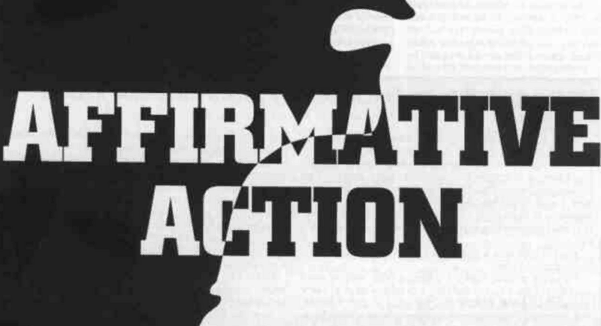The Color of Preference
AR Staff, American Renaissance, December 1992

As the nation’s population changes, so does the racial mix of the people entitled to affirmative action. Back in 1970, 66 percent of those who could expect advantages because of race were black; 27 percent were Hispanic. By 1990, the black percentage had dropped to 49 percent while Hispanics had risen to 36 percent. Asians and American Indians made up the rest.
Many blacks think of affirmative action as preferences for blacks, and are unhappy about sharing. The conflict has been most evident in California, where the number of Hispanics has been growing rapidly.
For example, in July 1988, the Los Angeles County Board of Supervisors decided on a new affirmative action program that would make the racial proportions of county employees mirror the county’s population. This was bad news for blacks, since earlier waves of affirmative action had already boosted their county employment figures to twice their proportion of the population. Hispanics, less practiced in the ways of racial preferences, were only about half as likely to be employed by the county as to live in it. Parity would have required approximately doubling the number of Hispanic employees and halving the number of blacks.
Blacks fought the plan, on the perplexing principle that they were for affirmative action but against preferential treatment. Translation: They wanted special treatment for blacks but not for Hispanics.
A more recent Los Angeles battle ground has been the Martin Luther King-Drew Medical Center. It is in what used to be a black neighborhood and affirmative action ensured that the staff was heavily black. Now the neighborhood is more than half Hispanic, as are the patients, and black staffers must fight off Hispanic job-seekers clamoring for “parity.” So far, they have mostly succeeded, since many of the top hospital administrators who make hiring decisions are black. Hispanics have taken their case to Los Angeles County, which will have to solve the ticklish problem of deciding who pays the price for affirmative action when there are no more whites left to discriminate against.
The racial shift in patients at MLK-Drew has not changed the hospital’s work. The U.S. Army still sends combat medics there for training because emergency-room patients come in with so many interesting kinds of bullet wounds.
As the benefits of affirmative action become more generous and widespread, people who used to call themselves white are changing their minds. Tens of thousands of “Indians” have come out of hiding; between 1970 and 1990 the number of people who told the census they were Indian went up 300 percent. “Indian” is just about whatever anyone says it is. There was much huffing and puffing when it was recently learned that a Los Angeles company that got $19 million worth of minority contracts was owned by a man who is 1/64th Cherokee.
Where does all this leave the poor bloody white man? The Hudson Institute estimates that in ten years only 15 percent of all new job-seekers will be white men, who are the only people who never get racial preferences. That means only 15 percent of job-seekers will pay the freight for the other 85 percent who will be entitled to preferences because of race or sex — or by then will white men be able to claim “minority” status, too?















